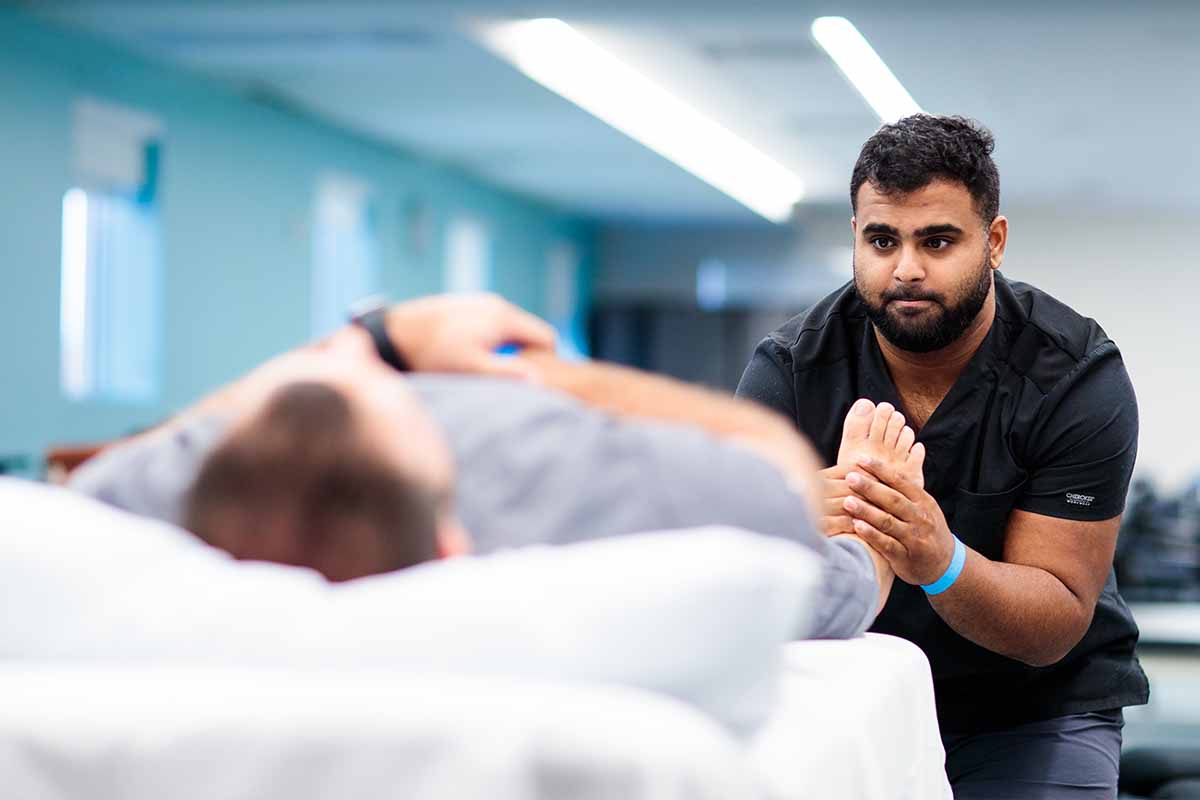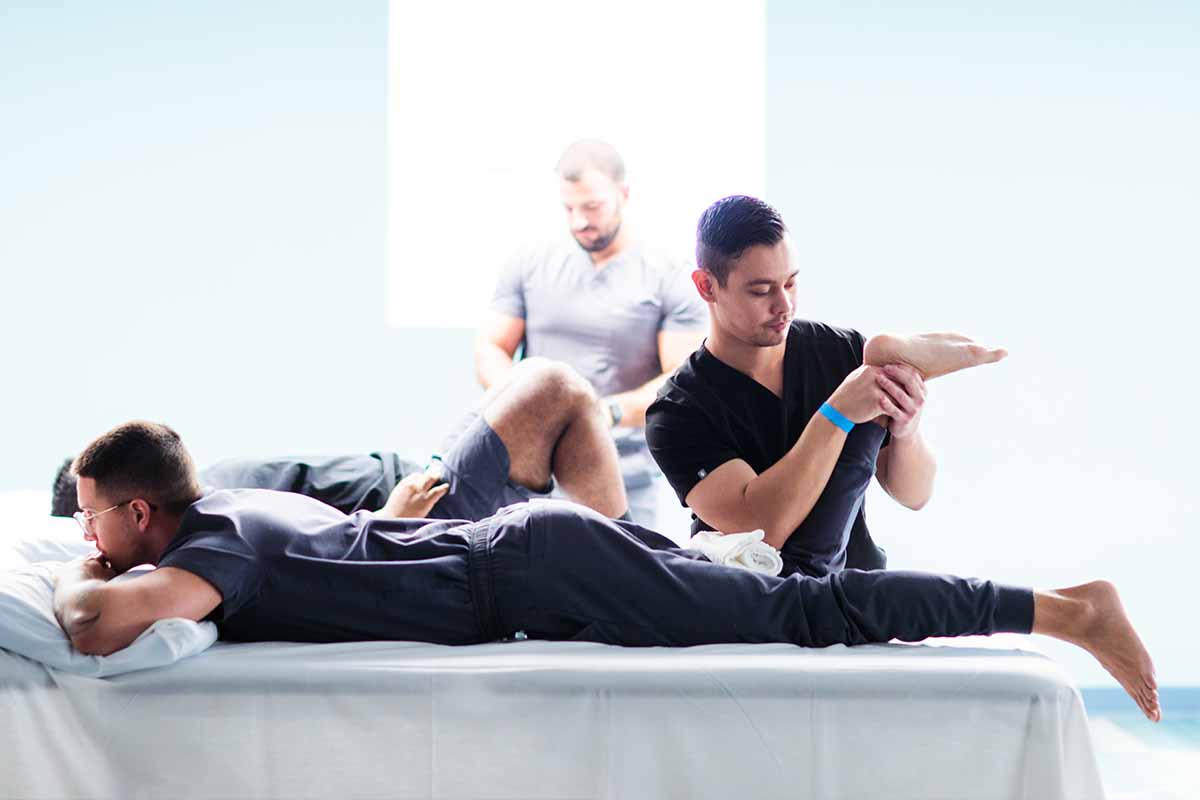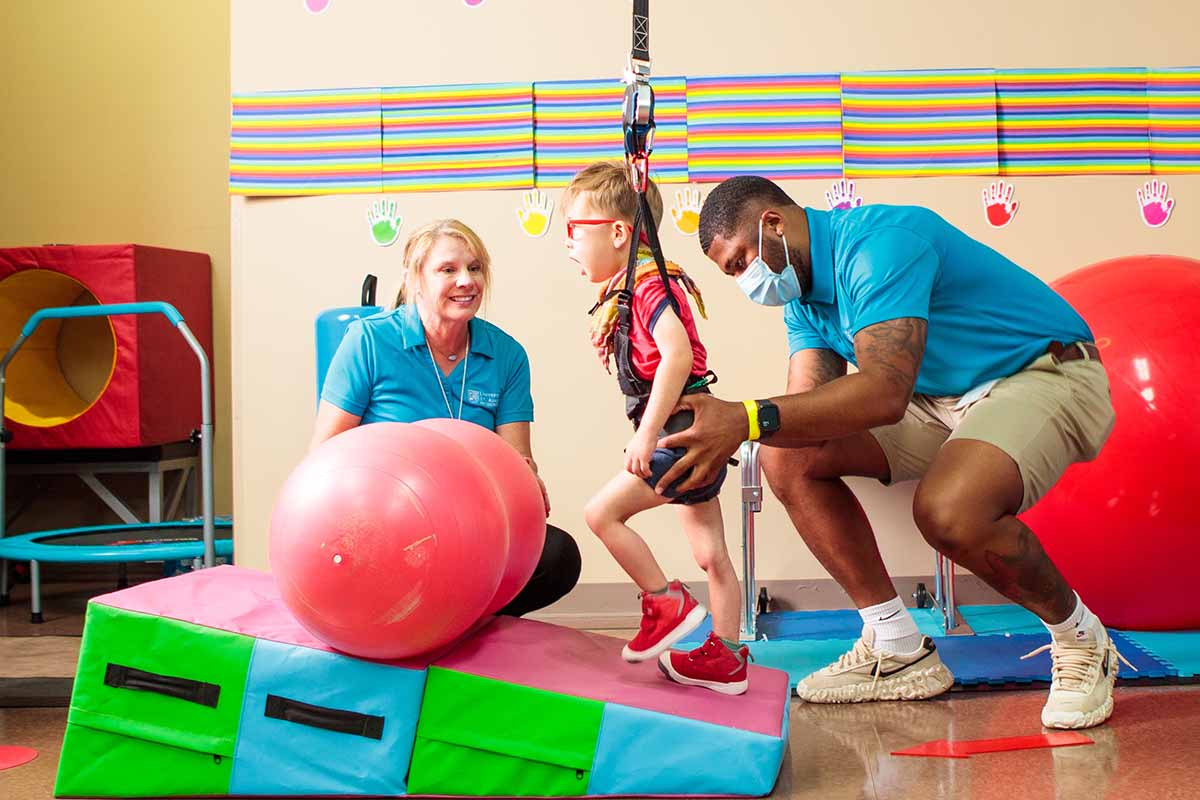When a boy in her local community sustained a spinal cord injury in a car accident, leaving him unable to walk, Elizabeth Ardolino, PT, MPT, MS, PhD, thought she might be able to help. An associate professor of physical therapy (PT) on the USAHS Austin campus, Dr. Ardolino is an expert on locomotor training in children. She invited the boy, Will, to come in for free treatment on the state-of-the-art mobility system housed on the Austin campus. Her Doctor of Physical Therapy (DPT) students were able to observe and participate. The seeds were planted for a program that is truly unique in the nation.
“We are the only university with a Doctor of Physical Therapy program that has integrated this type of a clinic into their curriculum,” Dr. Ardolino says.
Today, three children with disabilities are taking part in this program, which is integrated into the Pediatric Physical Therapy course on the Austin campus. Dr. Ardolino co-teaches this course with Megan Flores, PT, PhD, and Darryn Atkinson, PT, PhD. The instructors guide DPT students in using the SafeGait 360°® Balance and Mobility Trainer® to help the children practice ambulating.
Kids Gain Strength, Independence
The program is run like a pro bono clinic. Will comes in five days a week, along with Martin and Nathan, boys with cerebral palsy (CP). Martin and Nathan had been involved in previous lab activities and research with USAHS, so were a natural fit for the program.
Each boy spends an hour on the SafeGait, a body-weight support system that supports the patient like a crane as they walk on a treadmill. The SafeGait distinguishes between a patient’s intentional downward movement and an actual fall, helping patients gain strength and balance without the risk of falling. According to Dr. Ardolino, USAHS was one of the first higher education institutions in the nation to install this system.
“We are facilitating walking with the kids,” says Dr. Atkinson. “But walking is not an immediate goal. We want to help them take the next step from where they’re at.” For Will, who cannot feel or move his legs, using the SafeGait is a way to excite the spinal cord below the lesion. Along with neuromuscular electrical stimulation, this therapy promotes improved postural control and motor function, and anecdotally may also improve respiratory, bowel, and bladder function in patients, Dr. Atkinson says.
Each session also includes a half-hour on other activities focused on trunk control, balance, and mobility. Dr. Atkinson says it’s important for Will and Martin, who play on the same wheelchair basketball team, to practice holding their bodies upright and to engage with catching and throwing without leaning on their arms. This helps them improve trunk control and arm strength—and ultimately gain more independence at home.
For children with CP, the traditional approach is to brace and immobilize their limbs, Dr. Ardolino says. “But kids naturally want to move and to play. By putting them in an environment where they can move and they can play, I think the kids and their parents are starting to see hope for the future.”
She says the parents are “all extremely grateful that their kids are getting this level of intensive treatment and that it’s free of charge for them.” Word has spread to other parents, and they have a small waiting list. They hope to expand the program to include more kids in the future.
DPT Students Assess Kids, Help Treat Them
Drs. Flores, Ardolino, and Atkinson piloted this program last fall within Pediatric Physical Therapy, a course that all DPT students take in their sixth trimester. Half of the class participated in the trial run. In Spring 2020, all students took part. “We’ve been getting great feedback from students,” Dr. Ardolino says. “I’m so proud of the professionalism and passion they’ve shown.”
The students begin by assessing the kids’ nervous system function. “With faculty supervision, they create a daily plan for the kids,” Dr. Atkinson explains, “and they learn to manage the kids’ behavior and expectations. They also work with caregivers to create a care plan for the home. By the end of the course, the students are leading the sessions independently. Their confidence grows.”
When the Austin campus had to close in March due to the COVID-19 pandemic, students kept reaching out, asking how they could keep working with the kids. Students created virtual home exercise programs for the kids, and during the Summer trimester, the course will include telehealth sessions. “But it’s difficult, because the hands-on work is really needed,” Dr. Ardolino says.
Faculty are developing assignments related to the pediatric program in other DPT courses. They are also working on making this program interprofessional, involving faculty and students from the occupational therapy and speech-language pathology programs.
Faculty Influence the Field of Pediatric Therapy
Dr. Ardolino has worked in the field of locomotor training for 16 years. She trained with the Christopher & Dana Reeve Foundation’s NeuroRecovery Network®, working first on spinal cord injury in adults, then children. Dr. Atkinson completed a post-doctoral fellowship in pediatric neurorehabilitation at the University of Louisville with Dr. Andrea Behrman, cofounder of the NeuroRecovery Network.
He says that while the University of Louisville provides a similar level of intensive locomotor training with pediatric patients, they don’t have a Doctor of Physical Therapy program. Children with disabilities travel from around the world to attend the University of Louisville program and a few others in the United States. But only USAHS’s program provides the opportunity for DPT students and children to work together in this capacity.
Along with their colleague on the Austin campus, Megan Flores, PT, MPT, PCS, the three faculty members are among the leading therapists in the nation doing this kind of work with kids, Dr. Ardolino says. All three have published research papers about their work. Through their research, they hope to make an impact on pediatric therapy across the nation.
Dr. Ardolino says that typically, a child would get only one or two physical therapy sessions per week. “We are studying whether and how this more frequent and longer-duration practice makes a difference in the outcomes for those children,” she says. “We’re also collecting data on the impact of this program on students’ preparedness for their clinical experiences.” The team has submitted proposals to present at physical therapy conferences in the fall. They also hope to share this theory and interventions through continuing education courses in the future.
According to Dr. Atkinson, this type of therapy has been available for adults for about 16 years but has only become available to children in recent years. “But starting young can make such a difference,” he says. “Our goal would be that this approach is not so unique—that it could be widely available to help more kids.”
The University of St. Augustine for Health Sciences (USAHS) offers a hands-on Doctor of Physical Therapy (DPT) degree. Practice with mock and real patients in our state-of-the-art simulation centers and learn anatomy with our high-tech tools. Prepare for clinical practice with a wide range of patients, as well as advanced roles in research, practice leadership, and policymaking. Residential and Flex (weekend-focused) paths are available.










